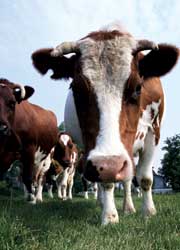
All of this has been accomplished, in my opinion, despite a nightmarish collection of federal rules and regulations. Many would argue that milk producers reap huge benefits from the federal milk market order program and from the price support program.
Not really. Take a look at the federal milk marketing order program. Milk producers’ cooperatives reap the lion’s share of any benefits. Whether any of these financial benefits ever trickle down to individual producers is a co-op by co-op story to be told another time.
Many also would argue that milk producers reap huge financial benefits from the price support program. Not really. About all the support program has done for the past several years is direct milk into the wrong product mix. It encourages the production of skim milk powder rather than more useful products such as milk protein concentrate and casein.
Federal programs that have driven feed grain prices into the ground have done milk producers much more good than any federal program supposedly built for the dairy business. Now, direct government payments to milk producers will drive milk prices lower and benefit consumers far more than milk producers.
“I’m here from the government and I’ve come to help you.”
Very frankly, I think the men and women who milk cows are the prototype of capitalism sans government. Yes, Uncle Sam does deserve a thank you for funding some research aimed at improving feeding and management practices. But feed and equipment suppliers are picking up more and more of the tab on basic research. Milk producers themselves have no lack of creative genius.

Please note: I’m using Ken Olson’s dairy farm numbers. Annually, Olsen surveys the states and counts up all the farms licensed to sell milk. The higher numbers typically reported are from the US Department of Agriculture. USDA counts every farm with at least one milk cow on it. USDA reported 91,990 “operations with milk cows” for 2002, almost 20,000 more than Olson.
Purely personal prejudice: We would have been better served if the government had created a program to help the 57,000 operators who exited the dairy business during the past 20 years.
The real action hero in this story is the cow. During 1982, production per cow averaged 12,306 lbs. Average output had increased to 15,570 lbs, plus 27%, by 1992. Last year, each cow cranked out 18,554 lbs of milk on average, up another 20%.
Put another way: In 1982, it took more than 11 million cows to make 135.5 billion lbs of milk. Last year: Slightly more than 9.1 million cows generated nearly 170 billion lbs of milk.
Bottomline: These cows and their keepers are a tough act to follow. But, I’m convinced we’ll see a repeat performance during the next 20 years. We already have herd averages with output per cow at 28,000 lbs and more. This is efficiency and productivity at their best. Hats off to you, ladies.